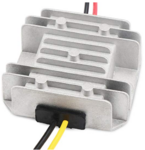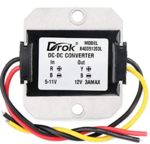goldconch
Active Member
I've got a bit of an electrical trouble-shooting problem, of my own creation, that I need a hand with (if anyone else has done this): frustrated with the cheap/weak headlight packed with ebike, I retrofitted a 12v LED off-road "light bar" to cast a wider beam. It worked quite well for a short time, and then went dead. I was doing some other wiring tidying at the same time, and maybe wasn't paying enough close attention. So now I am testing to see where the problem is. The LEDs are good. The original LED light is good. The std "headlight" wire is very thin. I checked for a controller fuse in the control box, and couldn't find one. I'm wondering if maybe I pinched or crimped one of this frail wires too tight on my tidy job and maybe cracked a wire within the insulation? Other operating theory is that maybe there was a short that burned an internal fuse or the controller itself? Does anyone have any experience with the (new) KT controllers to know if there is such a fuse? I want to splice in rear rack red LED, and maybe discreet handlebar tip orange LEDs for position lights. Appreciate any trouble-shooting pointers...



